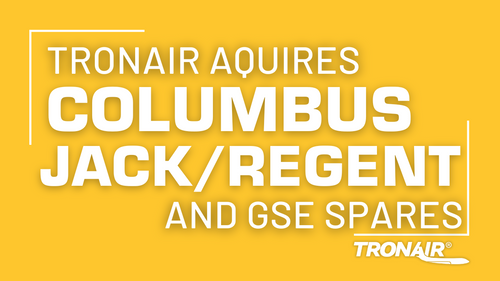
Types of Landing Gear Equipment and Aircraft Servicing Tools
Resources & Technical ArticlesTo ensure efficient takeoffs and landings, aircraft are equipped with various types of landing gear tailored to their specific needs. Aircraft landing gear is a critical part of any airport's ground operations, making it extremely important for ground personnel to know and understand how to take proper care of each type.
What Is Landing Gear?
Aircraft landing gear, or undercarriage, supports aircraft on the ground or water and is essential for landing, takeoff, and taxiing. Key components include brakes, shock absorbers, and retraction mechanisms.
Types of Landing Gear
Landing gear configurations typically come in three basic wheel arrangements: conventional, tandem, and tricycle-type. Additionally, aircraft landing gear systems are categorized as either fixed or retractable. Fixed landing gear remains extended beneath the aircraft during flight, while retractable landing gear is stowed inside the aircraft once it is airborne.
1. Conventional Landing Gear
Conventional landing gear is less common but remains prevalent in classic aircraft.
This type of landing gear features two main wheels located ahead of the center of gravity, supporting most of the aircraft's weight. Sometimes, a third wheel or skid is added at the tail for additional support and stability. Conventional landing gear is particularly useful for operations on non-paved runways, providing increased clearance for the forward fuselage and larger propellers.
2. Tandem Landing Gear
Tandem landing gear is a configuration where the main wheels are aligned along the longitudinal axis of the aircraft, usually under the fuselage. This type of landing gear is less common but offers specific advantages for certain aircraft designs.
3. Tricycle-Type Landing Gear
Tricycle-type landing gear is the most common system used in aircraft. It features two main wheels under the fuselage and a nose wheel under the aircraft's nose. This configuration is popular in both large and light general aviation aircraft. The main wheels support most of the weight and provide primary control, while the nose wheel aids in steering. Benefits include better visibility from the flight deck, more effective braking, and prevention of ground-looping, ensuring straight-line movement.
Types of Aircraft Landing Gear Equipment & Servicing Tools
Tronair offers a diverse range of landing gear and servicing equipment for the aerospace industry. Whether you operate light, single-engine aircraft or larger commercial planes, we provide solutions for your fleet!
Axle Jacks: Lifts the NLG/MLG for tire repair and maintenance.
Beadbreakers: Separate tire bead from the rim with little effort.
Dollies: Transport wheels, brakes, and landing gear efficiently.
- Wheel Dolly
- Landing Gear Dolly
- Wheel and Brake Dolly
Regulators, Adaptors & Connectors: Essential for nitrogen service.
Strut Servicing Tools: Maintain struts, brakes, and tires.
Brake Service Units: Used for servicing braking systems and to test brake pressure and for potential bleeds.
Shop Equipment for All Aircraft Landing Gear Types at Tronair
At Tronair, we make it easy to find the right type of landing gear tools and servicing equipment for your specific aircraft model. Simply visit the Tool & Equipment section of our website and select your aircraft make and model to find compatible types of landing gear equipment and servicing tools.
With a solid understanding of landing gear types and essential maintenance tools, browse Tronair's extensive selection of aircraft ground support equipment. With nearly 50 years of experience, Tronair is dedicated to providing the best equipment solutions, ensuring your fleet's safety and efficiency during takeoff, landing, and taxiing.
To receive a quote, visit the Request for Information page or contact us at (866) 426-6301 or (419) 866-6301, or email us at sales@tronair.com.












